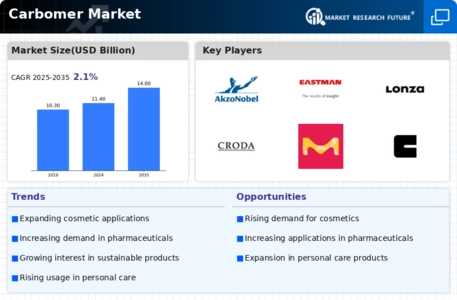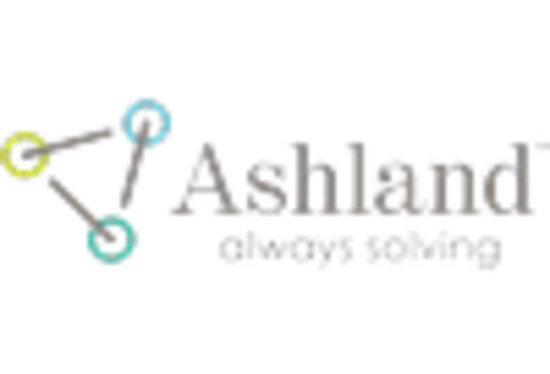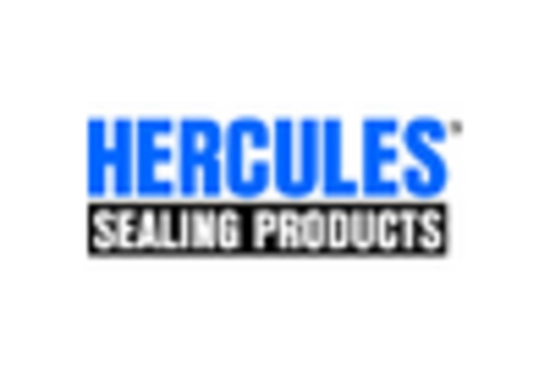Rising Demand for Eco-Friendly Products
The Carbomer Market is increasingly influenced by the rising consumer demand for eco-friendly and sustainable products. As environmental concerns gain prominence, manufacturers are exploring bio-based alternatives to traditional synthetic carbomers. This shift towards sustainability is likely to create new opportunities within the market, as companies seek to align their product offerings with consumer values. The trend towards green chemistry and sustainable practices is expected to drive innovation in the development of biodegradable carbomers. Consequently, the Carbomer Market may experience a transformation, with a growing emphasis on environmentally responsible formulations that appeal to eco-conscious consumers.
Increasing Applications in Pharmaceuticals
The Carbomer Market is experiencing a notable increase in demand due to its diverse applications in the pharmaceutical sector. Carbomers are widely utilized as thickening agents, stabilizers, and emulsifiers in various formulations, including gels and creams. The pharmaceutical industry is projected to grow at a compound annual growth rate of approximately 4.5 percent, which is likely to drive the demand for carbomers. As the need for effective drug delivery systems rises, the role of carbomers in enhancing the bioavailability of active ingredients becomes increasingly critical. This trend suggests that the Carbomer Market will continue to expand as pharmaceutical companies seek innovative solutions to improve product efficacy and patient compliance.
Regulatory Compliance and Safety Standards
The Carbomer Market is significantly impacted by the stringent regulatory compliance and safety standards imposed by various health authorities. As the demand for carbomers in pharmaceuticals and personal care products increases, manufacturers must adhere to rigorous testing and quality assurance protocols. Compliance with regulations such as the FDA guidelines for pharmaceutical applications and cosmetic safety assessments is crucial for market players. This focus on safety and efficacy not only ensures consumer protection but also enhances the credibility of products in the Carbomer Market. As regulations evolve, companies that prioritize compliance are likely to gain a competitive edge, fostering trust and loyalty among consumers.
Technological Advancements in Manufacturing
Technological advancements in the production of carbomers are playing a pivotal role in shaping the Carbomer Market. Innovations in polymerization techniques and the development of more efficient manufacturing processes are likely to enhance product quality and reduce production costs. This could lead to a more competitive market landscape, as manufacturers strive to meet the increasing demand for high-performance carbomers. Furthermore, advancements in analytical techniques for quality control ensure that products meet stringent safety and efficacy standards. As manufacturers adopt these technologies, the Carbomer Market may witness a surge in new product offerings, catering to diverse applications across various sectors.
Growth in Cosmetic and Personal Care Products
The Carbomer Market is significantly influenced by the burgeoning cosmetic and personal care sector. With a projected growth rate of around 5.2 percent in this industry, the demand for carbomers is expected to rise correspondingly. These polymers serve essential functions in formulations, providing desired viscosity and stability in products such as lotions, creams, and gels. The increasing consumer preference for high-quality personal care products, coupled with the trend towards multifunctional formulations, indicates a robust market for carbomers. As brands strive to meet consumer expectations for performance and safety, the Carbomer Market is poised for substantial growth, driven by innovation and product development.

















Leave a Comment